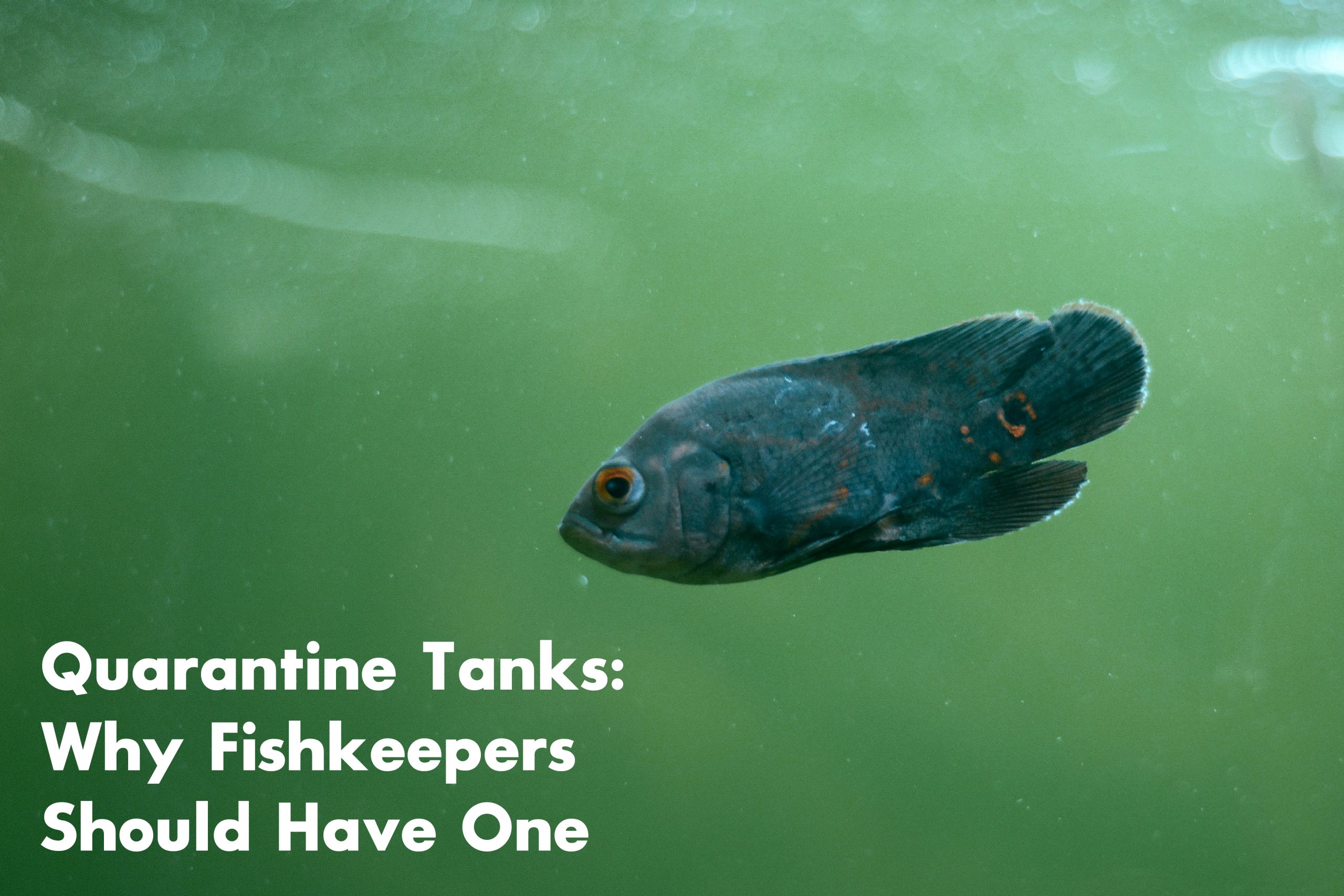A quarantine tank helps in the treatment of fish from parasites, infectious diseases, and injuries. Aside from treating diseases and injuries, a quarantine tank can also be a temporary holding tank for aquatic creatures and plants for multiple reasons. Almost every veteran fishkeeper will have a quarantine tank at their disposal for multiple uses.
What Is A Quarantine Tank?
A quarantine tank (also known as a hospital tank) is a separate tank that is used to temporarily isolate aquarium inhabitants or aquatic plants for observation and/or treatment before they enter the main aquarium. Besides treatments, a quarantine tank can also be a secondary holding tank for your inhabitants for situations like when you are deep cleaning the main tank, a crack or leak happens, or other unfortunate circumstances arise.
Why Quarantine Fish?
Fish are sensitive creatures and are always susceptible to parasites, injuries and infectious diseases. In comes the quarantine tank! By quarantining fish, fishkeepers are able to closely observe new or existing inhabitants for any signs of disease, injuries, and parasites and properly treat them without putting the existing aquarium inhabitants at risk. Isolating inhabitants can also help with feeding and treatments without the harassment of the other active inhabitants in the tank.
Wait… Quarantine Plants Too?
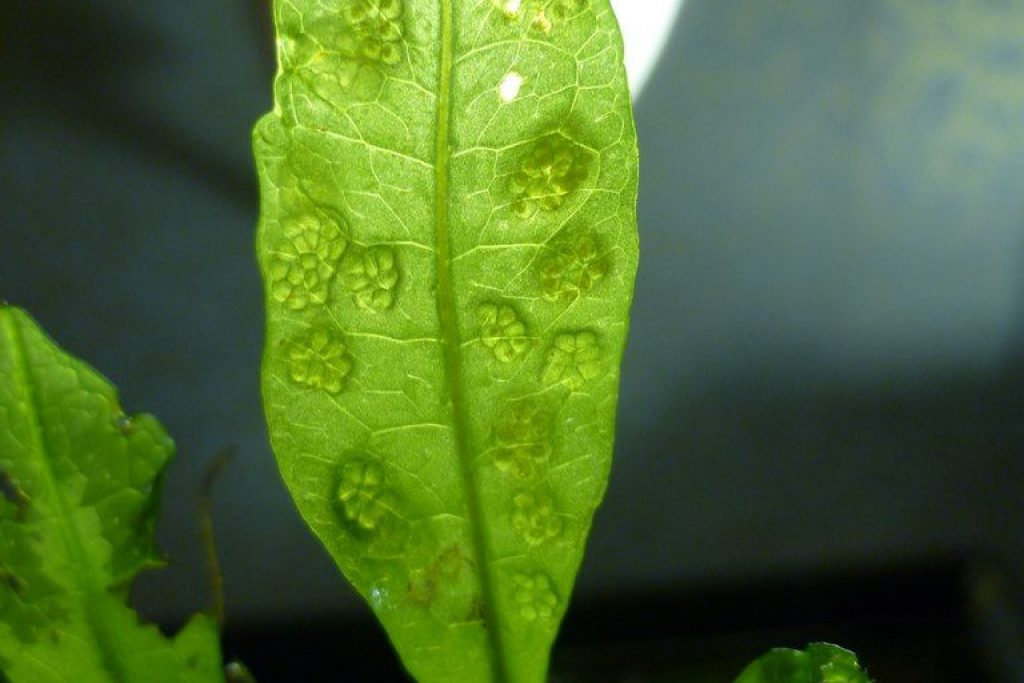
Aquatic plants can have some unwanted hitchhikers on them
Yes! If you decide to add plants to your set-up, quarantining plants is also recommended as there might be some unwanted hitchhikers on them. Snails and their eggs are one of the main reasons plants are quarantined and treated before going into the main tank. Aquatic plants can also sometimes transfer harmful pesticides and fertilizers, parasites and pathogens but rarely does this happen (unless you decide to use plants that are taken from the wild).
When Should I Be Quarantining Fish/Plants?
New Fish
Whenever you get new fish, they should go into a quarantine tank first before going into the main display. This is to ensure that the new inhabitants are not carrying any parasites and other infectious diseases that can affect the inhabitants of the main display. The last thing you want is the whole tank being infected and losing all your inhabitants. This is common practice for veteran fishkeepers as fish from fish stores could harbour some form of infectious disease or parasites but are hidden. New fish are recommended to be quarantined for 4-6 weeks before going into the main tank to minimise risks.
Diseases And Parasites
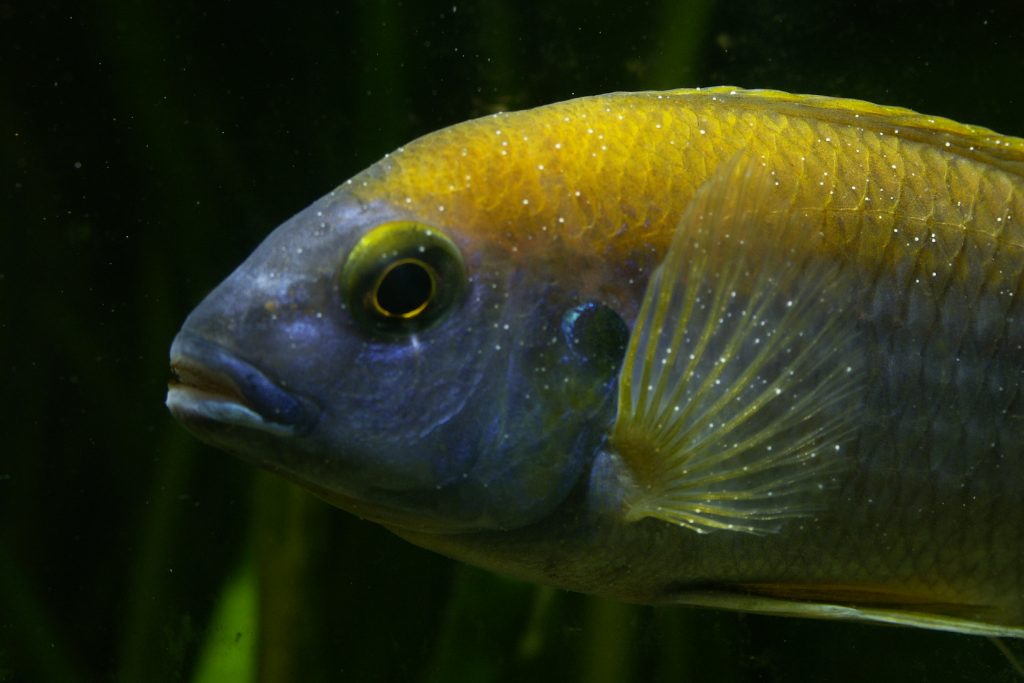
Common White Spot Disease in fish
Parasites and infectious diseases are an unfortunate and unavoidable aspect of the aquarium hobby. Common infections like White Spot Disease/Ich, Fin Rot, fungal infections, swim bladder disease, etc. can happen unexpectedly to the inhabitants. These can come from fighting, stress, and self-introduction in the tank. Inhabitants should be removed and treated immediately in a quarantine tank if any illness is suspected or present.
Injured Fish
Fighting can and will happen in any aquarium that is properly and poorly stocked. Injuries such as ulcerations and nipped fins can result in secondary infections from bacteria. Fish can also bump into hardscapes such as rocks and wood, creating scratches and ulcers on themselves which requires treatment.
New/Wild Plants
Aquatic plants can have some unwanted hitchhikers like snails. Snails are considered as pests (sometimes not) in a planted tank as they can be are sore to look at if they spread and can damage plants. Snail eggs can come from the nurseries that the plants are grown at and not necessarily from the shop. Other things that aquatic plants can harbour are harmful pesticides and fertilizers, parasites and pathogens but are less prevalent from fish shops compared to ones taken directly from the wild.
Other Unfortunate Emergencies
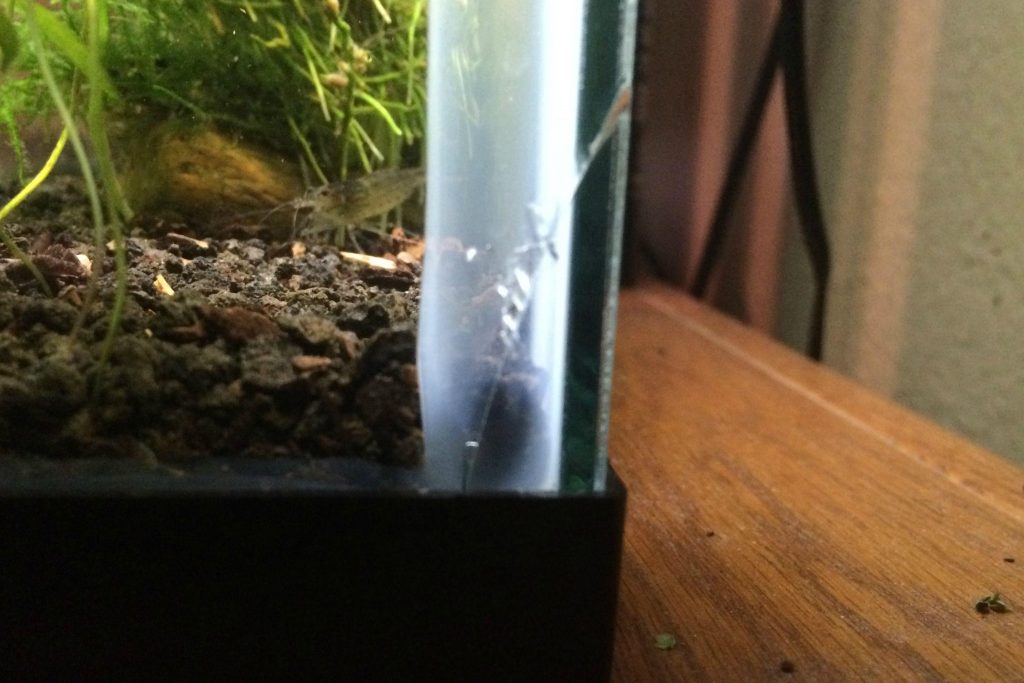
Cracked aquarium glass can cause leaks
Having a separate tank can save you when unexpected emergencies happen to the main tank. Cracked or leaking tanks, ammonia spikes, contamination, power failures, contagious and fatal diseases/parasites and more are scenarios that can cause panic to fishkeepers. A quarantine tank comes in handy so you can immediately transfer fish to a safer location while the main tank is being treated, repaired, cleaned, replaced, etc.
Setting Up A Quarantine Tank
The set-up for a quarantine tank is similar to a normal display tank set-up but much more minimal. This is because we want the tank to be easily accessed and cleaned when needed. Here is the equipment you need:
The Tank
This is what you are going to use to house your inhabitants. In this case, the aquarium can be a simple plastic tank, tub, or a normal glass tank. Try to avoid acrylic tanks as acrylic tanks are not only expensive, they are porous and can absorb/harbour various chemicals, bacteria, etc. during treatment. You will also need to consider the size of the tank. If you are looking to quarantine larger fish or multiple fish at the same time, a larger tank may be required.
Filters
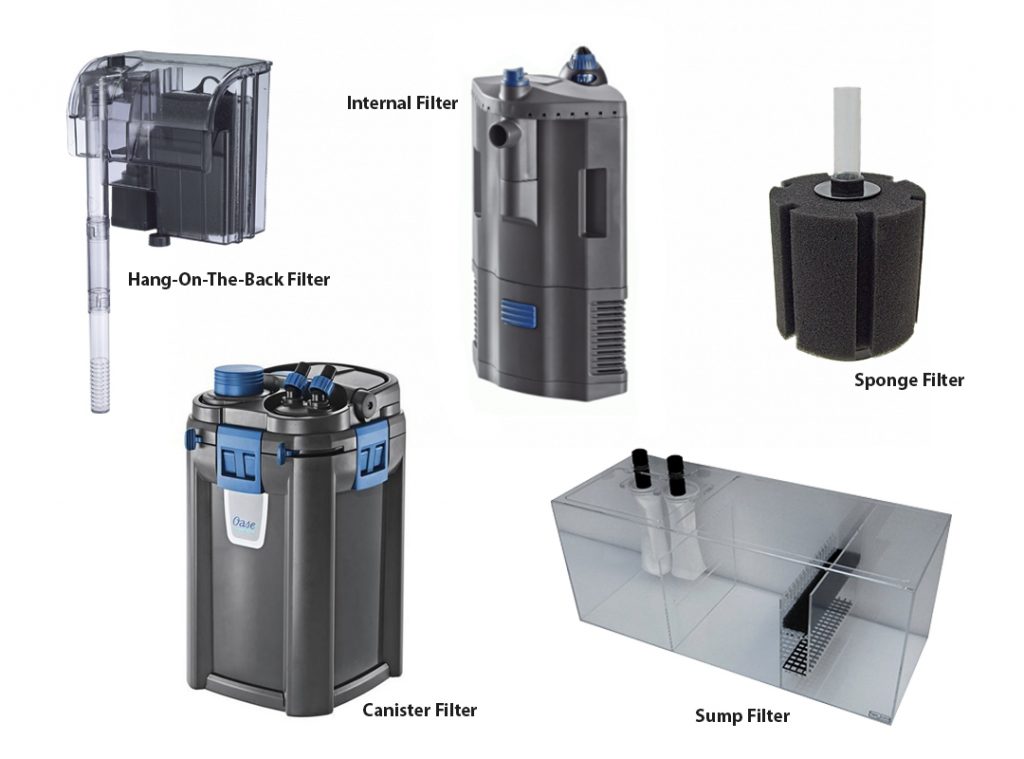
Different types of filters for aquariums
The filter will be responsible for processing waste from your fish. Depending on the size of the aquarium, a compatible filter is needed. Try to choose a filter that has an adjustable flow or one that does not create any flow at all. Depending on the situation, we may not want too much current in the tank as it can stress some fish out. Sponge filters are a popular pick for quarantine tanks as it doesn’t create much current and helps to aerate the tank.
Heaters
A heater is important to maintain the temperature of the water especially during cold weathers or when the room is air-conditioned. We do not want our temperatures to be fluctuating which can cause a lot of stress to the fish. Make sure to get an adjustable heater along with a thermometer so you can adjust and monitor the temperature. A heater is useful especially for illnesses like Ich, were increasing the temperature will speed up the life cycle of it. Other uses of a heater are to increase appetite and also spawning in certain species of fish. A general rule is to have 1w per litre of water in the aquarium. Make sure that your fish is tolerant to high temperatures first before bumping up the temperature.
Medication
Make sure you have some medication on hand just in case. A broad-spectrum medication that treats bacterial, fungal, and parasitic infections should be enough unless you specifically know what your fish is suffering from, then more specialized medication is needed. The next best thing besides medication is aquarium salt. Aquarium salt helps to promote gill health, production of mucous, and provide essential electrolytes for good colouration and vitality. Make sure the fish that you have are tolerant to salt before using it. These medications can also be used as a ‘vaccination’ for new fish that you just got from the store.
Fish Food
Get some high quality dried pellets/flakes or live/frozen food like Daphnia, Bloodworms, Brineshrimps. These foods can increase appetite and good quality dry foods will not cloud or dirty the water too much.
Lighting
A simple LED light is all that is needed to help with the observation of your fish. A light fixture that is hooked up to a timer will also create a natural light cycle in the tank that will benefit the health of the fish and promote natural behaviour. Avoid direct sunlight as we do not want unnecessary algae growth in the tank.
Accessories

PVC piping can be used as hides for fish
Your patients are going to need some form of hiding space to feel secure and comfortable. Most fishkeepers will use simple PVC pipes or artificial plants as hides for fish. It is not necessary to use substrates in the quarantine tank like sand and gravel as these make it difficult to keep clean and can sometimes absorb the medication.
What To Watch Out For During Quarantine
During quarantine, you should be observing that your new fish are swimming and eating normally. Look for external parasites, signs of infections or damage. Abnormal behaviours (heavy breathing, lethargy) and markings on bodies (ulcerations, lesions) are an indication that there is something wrong with your fish. Research thoroughly first to ensure proper diagnosis and make the correct treatment.
Some Useful Tips
- Cycle the quarantine tank first or use your main tank’s aquarium water when filling up the quarantine tank when starting out. A new quarantine tank is not properly cycled and can build up ammonia because beneficial bacteria is not fully established yet.
- Do water changes regularly to keep the water pristine and clean.
- Avoid cross-contamination between your main tank and the quarantine tank by washing your hands before dipping them into the tank water.
- After treatments, it is best to disinfect the entire tank before adding a new batch of fish inside to eliminate any lingering pathogens, parasites etc.
- Make sure equipment used in the quarantine tank is not shared between any other tanks as this can cross-contaminate your tanks.
You can introduce your fish back into the main tank after 4-6 weeks of no visible problems. If within those 4-6 weeks of quarantine a disease pops up, you will have to restart the time from when the disease is treated. We know it can be tough and we just want to see our new fish in their new environment but we need to have patience if we want everything to be well and without risks. Patience in the fishkeeping hobby will save you a lot of time and money in the long run. Best of luck in treating the new/sick fish!

